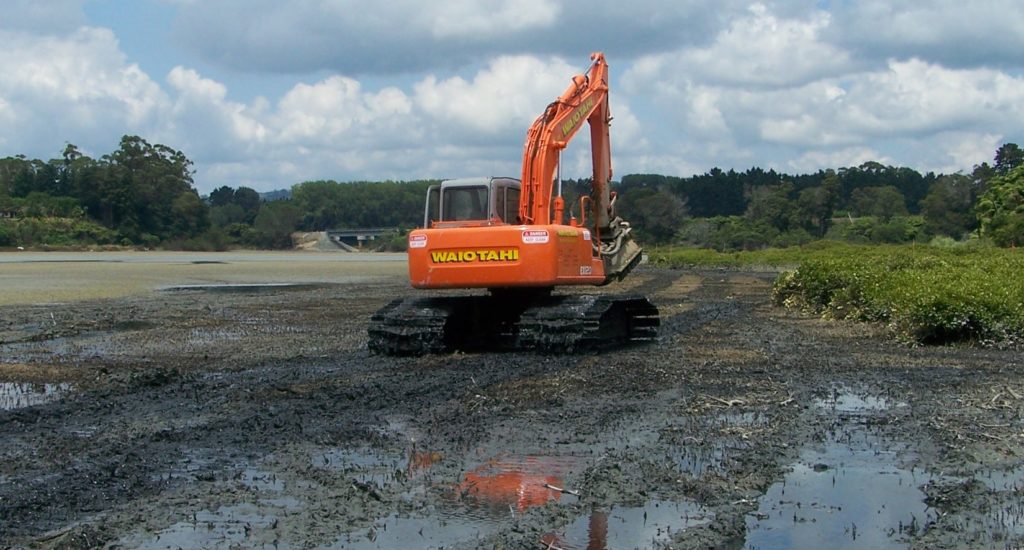Clearing mangroves makes ‘muddification’ worse

Mangrove removal at Ōmokoroa in Tauranga Harbour, New Zealand. Credit Braden Rowson
Clearing mangroves to stop estuaries getting clogged with mud actually makes the problem worse, new research shows.
The study focussed on New Zealand, where widespread deforestation and farming was begun by European settlers in the late 19th Century, increasing the amount of sediment in rivers.
Over many years, this has caused mud to build up in estuaries – providing habitat for mangroves to expand.
Mangroves have been cut down in some parts of New Zealand, with the aim of reducing mud build-up and exposing the mud to currents and tides that can wash it out to sea.
But the study found this doesn’t work.
“We were surprised to find that mangrove removal increases muddification of estuaries,” said lead author Dr Danghan Xie, from Boston University.
“Mangroves create relatively deep, fast-flowing channels that allow sediment to flow out to sea. Mangroves also trap mud efficiently near river channels, leaving less to settle elsewhere.
“When you remove mangroves, sediment can reach parts of estuaries that previously received very little. Overall, mangrove removal causes estuaries to trap more mud, not less.”
Mangroves are made up of salt-tolerant coastal trees and shrubs.
While mangroves are under threat in many parts of the world due to human activity, the expansion of muddy mangrove habitats in once-sandy New Zealand estuaries is often unwelcome.
The study used a “bio-morphodynamic model” – a computer simulation that takes account of factors including tides, currents, sediment patterns and mangrove growth in New Zealand estuaries.
The findings show that coastal management of muddification probably won’t work.
“We need to look into a bigger picture,” said Dr Barend van Maanen, from the University of Exeter.
“Our findings show mangroves are a symptom of a wider problem – not the cause.
“Rather than focusing on mangrove removal at the coast, the solution is more sustainable land use upstream.
“By reducing the amount of sediment going into rivers, we can safeguard sandy ecosystems and eliminate the pressure for expensive – and possibly counter-productive – management downstream.”
The research team included the universities of Exeter, Utrecht, Boston, Leuven, Waikato, Auckland and the Waikato Regional Council.
The paper, published in the journal Nature Communications, is entitled: “Mangrove removal exacerbates estuarine infilling through landscape-scale bio-morphodynamic feedbacks.”



